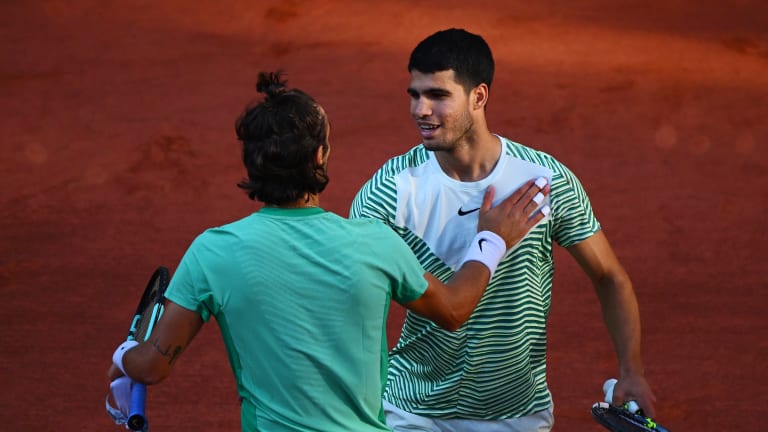Roland Garros
Alcaraz makes the simple look easy in converting Musetti from competitor to bystander
By Jun 04, 2023Roland Garros
Was the Carlos Alcaraz-Jannik Sinner Roland Garros match the best ever played?
By Jun 13, 2025Roland Garros
Who were the winners and losers at 2025 Roland Garros?
By Jun 09, 2025Roland Garros
Carlos Alcaraz and Jannik Sinner played the match of the decade, and maybe the century, at Roland Garros
By Jun 09, 2025Roland Garros
PHOTOS: Carlos Alcaraz captivates Chatrier with trademark joy after improbable Roland Garros title defense
By Jun 09, 2025Roland Garros
Carlos Alcaraz saves three match points, tops Jannik Sinner in longest Roland Garros final of Open Era
By Jun 08, 2025Roland Garros
Aryna Sabalenka clarifies controversial Coco Gauff claim: "Can't pretend it was a great day"
By Jun 08, 2025Roland Garros
Coco Gauff counters Aryna Sabalenka's Roland Garros claim by saying she 'wanted' Iga Swiatek in final
By Jun 08, 2025Roland Garros
2025 Roland Garros men's final preview: Carlos Alcaraz vs. Jannik Sinner
By Jun 07, 2025Roland Garros
PHOTOS: Coco Gauff celebrates Roland Garros title with parents, toasts champagne at Tennis Channel set
By Jun 07, 2025Alcaraz makes the simple look easy in converting Musetti from competitor to bystander
The top seed ripped 47 winners to the Italian's 16 during a 6-1, 6-2, 6-4 fourth-round demolition at Roland Garros Sunday.
Published Jun 04, 2023
Advertising

Musetti had won all nine sets he played in the first three rounds, but couldn't manage to post one against the reigning US Open champion.
© GETTY IMAGES
Advertising

Alcaraz will carry a 4-0 record against his quarterfinal opponent Stefanos Tsitsipas. The 20-year-old beat the Greek to successfully defend his Barcelona crown in April.
© © Andy Cheung / ArcK Images / Getty Images